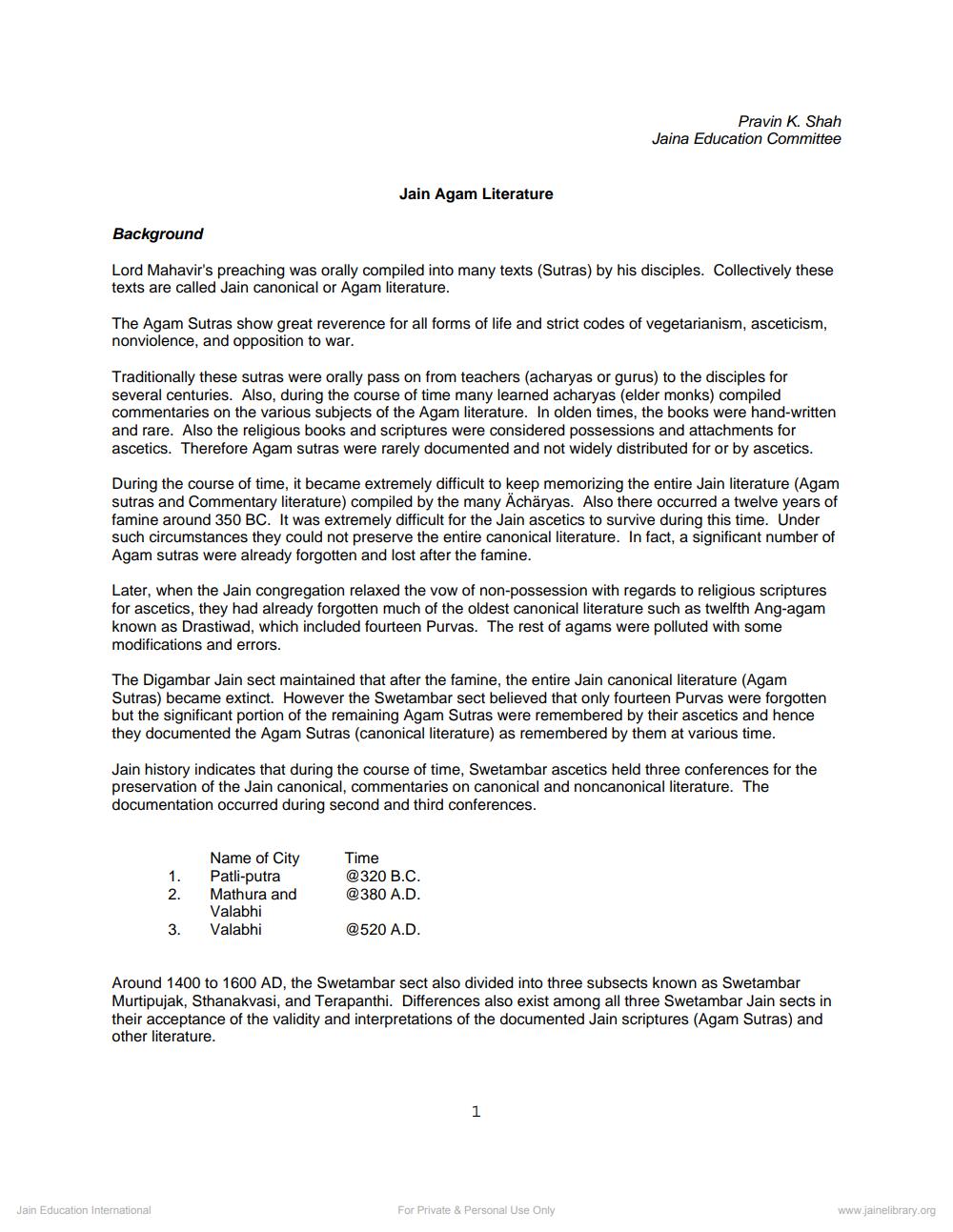________________
Pravin K. Shah Jaina Education Committee
Jain Agam Literature
Background
Lord Mahavir's preaching was orally compiled into many texts (Sutras) by his disciples. Collectively these texts are called Jain canonical or Agam literature.
The Agam Sutras show great reverence for all forms of life and strict codes of vegetarianism, asceticism, nonviolence, and opposition to war.
Traditionally these sutras were orally pass on from teachers (acharyas or gurus) to the disciples for several centuries. Also, during the course of time many learned acharyas (elder monks) compiled commentaries on the various subjects of the Agam literature. In olden times, the books were hand-written and rare. Also the religious books and scriptures were considered possessions and attachments for ascetics. Therefore Agam sutras were rarely documented and not widely distributed for or by ascetics.
During the course of time, it became extremely difficult to keep memorizing the entire Jain literature (Agam sutras and Commentary literature) compiled by the many Acharyas. Also there occurred a twelve years of famine around 350 BC. It was extremely difficult for the Jain ascetics to survive during this time. Under such circumstances they could not preserve the entire canonical literature. In fact, a significant number of Agam sutras were already forgotten and lost after the famine.
Later, when the Jain congregation relaxed the vow of non-possession with regards to religious scriptures for ascetics, they had already forgotten much of the oldest canonical literature such as twelfth Ang-agam known as Drastiwad, which included fourteen Purvas. The rest of agams were polluted with some modifications and errors.
The Digambar Jain sect maintained that after the famine, the entire Jain canonical literature (Agam Sutras) became extinct. However the Swetambar sect believed that only fourteen Purvas were forgotten but the significant portion of the remaining Agam Sutras were remembered by their ascetics and hence they documented the Agam Sutras (canonical literature) as remembered by them at various time.
Jain history indicates that during the course of time, Swetambar ascetics held three conferences for the preservation of the Jain canonical, commentaries on canonical and noncanonical literature. The documentation occurred during second and third conferences.
1.
Name of City Patli-putra Mathura and Valabhi Valabhi
Time @320 B.C. @380 A.D.
3.
@520 A.D.
Around 1400 to 1600 AD, the Swetambar sect also divided into three subsects known as Swetambar Murtipujak, Sthanakvasi, and Terapanthi. Differences also exist among all three Swetambar Jain sects in their acceptance of the validity and interpretations of the documented Jain scriptures (Agam Sutras) and other literature.
Jain Education International
For Private & Personal Use Only
www.jainelibrary.org




